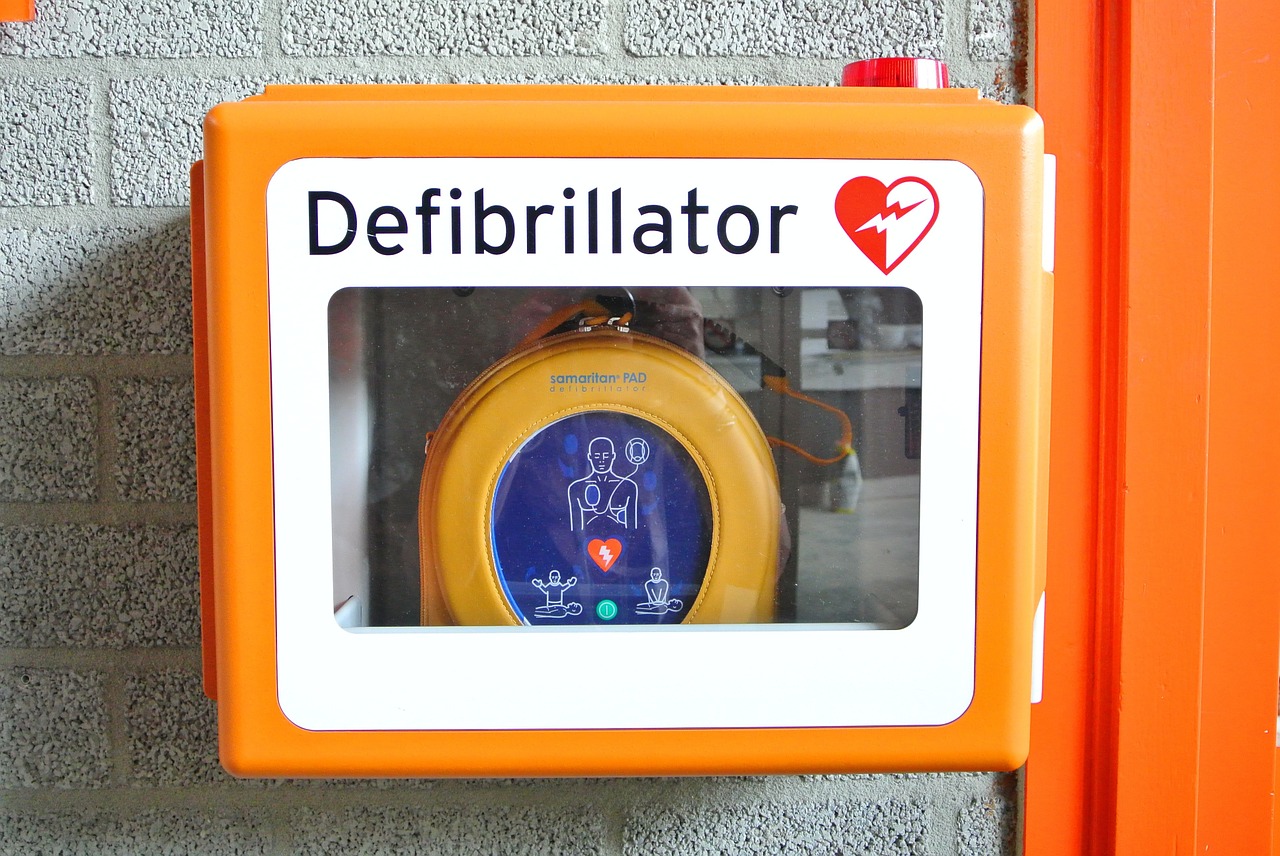A defibrillator is a device that stops fibrillation, which in our particular case is a usually fatal quivering of the heart ventricles.
Defibrillation
Fibrillation is an ineffective quivering of the heart and no blood is pumped out. A sufficient shock of electricity to the heart aka defibrillation, will stop this quivering and give the heart a chance to get back into a normal (sinus) rhythm.
Although someone may be in cardiac arrest they may not necessarily be in a rhythm that can be defibrillated. There are 3 rhythms that can be defibrillated:
- Ventricular Fibrillation (VF, the most common)
- Ventricular Tachycardia (VT, very fast heart rate)
- Supraventricular Tachycardia (SVT)
There are also 2 types of heart rhythm that cannot be defibrillated and are treated using other methods:
- Pulseless Electrical Activity (PEA)
- Asystole (aka flatline)
Types of Debrillator
In terms of cardiac arrest, we commonly hear about 2 types of defibrillator.
The first is an external type that you might see at your local sports centre or high street and is commonly known as a defib or AED (Automatic External Defibrillator).
The second type is an internal one and is commonly known as an Implantable Cardioverter Defibrillator (ICD). These are implanted into someone who has either had a cardiac arrest (secondary) or may be susceptible to having one (primary).
External Defibrillators
Originally defibrillators involved the operator making decisions on when to use the defibrillator, and as time has gone on they have been enhanced to detect when shocks are needed and reduce operator intervention. Thus, they have become more automated and are commonly referred to as automatic external defibrillators.
Implantable Cardioverter Defibrillators
For much more information on ICD’s and the ownership of them check out our dedicated resources.
Defibrillator Locations
AED’s may be placed in all sorts of locations and where they are made available for access by the public they are known as Community Public Access Defibrillators (CPAD). The recommendation from The Resuscitation Council is that the device should be freely available, but you will find many of them stored in a secure case. If done properly they should be accessible by calling 999 and the call handler will then give the release code.
There are a number of projects to map defibrillators and we have collated them along with many other maps on our Defib Maps page.
Using an AED
AED’s are very simple to use, talking you through the procedure one step at a time. They are intelligent enough to ensure that they cannot give a shock when not needed and famously a pioneer of them, Douglas Chamberlain once stated “the only damage you can do with an AED is if you whack someone round the head with one!”

